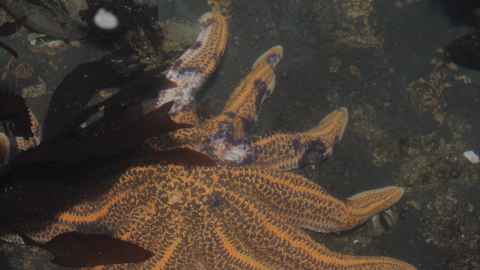Seen a new starfish lately? Scientists want to know
16 February 2018
A wasting disease is killing starfish around the world and now scientists are concerned that a change in sea temperatures might mean the disease could start to have an effect on New Zealand starfish species.

A wasting disease is killing starfish around the world and now scientists are concerned that a change in sea temperatures might mean the disease could start to have an effect on New Zealand starfish species.
Professor Mary Sewell from the University of Auckland’s School of Biological Sciences and Dr Ian Hewson from Cornell University in Ithaca, New York, who is currently visiting New Zealand, are asking the public to report sick starfish.
Called sea-star wasting disease or SSWD, the virus thought to be the cause of the disease has affected millions of starfish on the west coast of North America. It appears to be related to a viral infection but also changes in environmental conditions, in particular warmer ocean temperatures.
“Finding out early when and where SSWD might be in New Zealand and whether it is already affecting starfish here will allow us to sample both healthy and diseased specimens to help us research this disease."
“Since waters of the Tasman Sea and surrounds have been anomalously warm over the past few months, it’s possible that this wasting disease is affecting species around the New Zealand coast and we are asking anyone who sees a sick starfish to contact us,” says Dr Hewson.
New Zealand has many species of starfish (also known as sea stars or asteroids) but only one instance of the disease has been documented in New Zealand and that was in 2015.
SSWD begins with observable changes in behaviour including lethargy and curling of limbs, followed by development of lesions on the skin surface, loss of arms and deflation of the body until the starfish eventually dies.
Professor Sewell says a photograph of any starfish exhibiting symptoms, along with the date it was taken and the location, including GPS co-ordinates if at all possible, would be very useful.
“Finding out early when and where SSWD might be in New Zealand and whether it is already affecting starfish here will allow us to sample both healthy and diseased specimens to help us research this disease,” she says.
Anyone who wants to report seeing a starfish affected by SSWD can go to our facebook page or email m.sewell.@auckland.ac.nz
Media inquiries
Anne Beston | Senior Media Adviser
Tel: 09 923 3258
Mob: 021 970 089
Email: a.beston@auckland.ac.nz